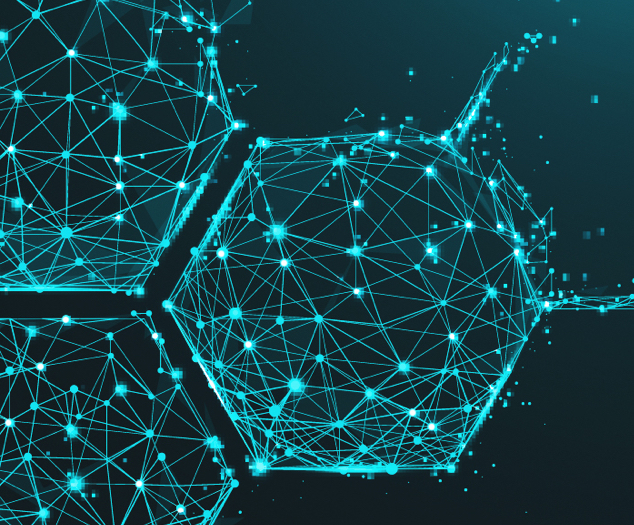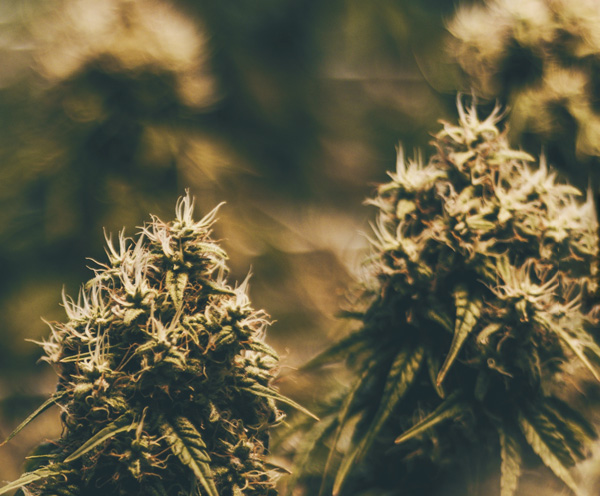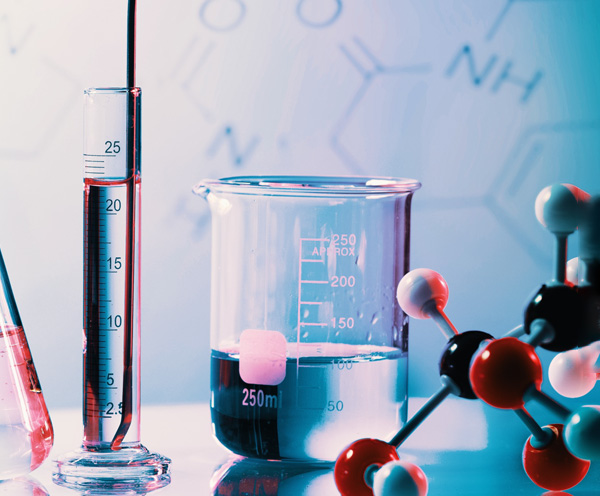See How The Body's Intrinsic Cannabinoids Work
Endocannabinoids serve as a natural check on the nervous system.1
Learn how they help the body maintain homeostasis.
Cannabinoids break down into 3 main classes:
endocannabinoids, phytocannabinoids, and synthetic cannabinoids.1, 2

Endocannabinoids

Phytocannabinoids

Synthetic Cannabinoids
The Effects of Naturally-occurring Cannabinoids
Cannabis sativa L. is a species of flowering plants in the Cannabaceae family. It has been used therapeutically for thousands of years, while also being notorious for its “high”-inducing psychotropic effects. But now with the discovery of cannabinoids, we are able to better understand the cause of these effects.38, 39
References
1. VanDolah HJ, Bauer BA, Mauck KF. Clinicians' Guide to Cannabidiol and Hemp Oils. Mayo Clin Proc. Sep 2019;94(9):1840-1851. doi:10.1016/j.mayocp.2019.01.003
2. Alger BE. Getting high on the endocannabinoid system. Cerebrum. Nov 2013;2013:14.
3. Mackie K. Cannabinoid receptors: where they are and what they do. J Neuroendocrinol. May 2008;20 Suppl 1:10-4. doi:10.1111/j.1365-2826.2008.01671.x
4. Rosenberg EC, Tsien RW, Whalley BJ, Devinsky O. Cannabinoids and Epilepsy. Neurotherapeutics. Oct 2015;12(4):747-68. doi:10.1007/s13311-015-0375-5
5. Maccarrone M, Bab I, Biro T, et al. Endocannabinoid signaling at the periphery: 50 years after THC. Trends Pharmacol Sci. May 2015;36(5):277-96. doi:10.1016/j.tips.2015.02.008
6. Flores-Sanchez IJ, Verpoorte R. Secondary metabolism in cannabis. Phytochemistry Reviews. 2008;7(3):615-639. doi:10.1007/s11101-008-9094-4
7. US Food and Drug Administration. FDA and Cannabis: Research and Drug Approval Process. Updated Oct 10, 2020. Accessed Sept 2, 2021. https://www.fda.gov/news-events/public-health-focus/fda-and-cannabis-research-and-drug-approval-process
8. US Food and Drug Administration. FDA Approves First Drug Comprised of an Active Ingredient Derived from Marijuana to Treat Rare, Severe Forms of Epilepsy. 2018. https://www.fda.gov/news-events/press-announcements/fda-approves-first-drug-comprised-active-ingredient-derived-marijuana-treat-rare-severe-forms
9. Yang Y, Lewis MM, Bello AM, Wasilewski E, Clarke HA, Kotra LP. Cannabis sativa (Hemp) Seeds, Delta(9)-Tetrahydrocannabinol, and Potential Overdose. Cannabis Cannabinoid Res. 2017;2(1):274-281. doi:10.1089/can.2017.0040
10. Small E. Evolution and Classification of Cannabis sativa (Marijuana, Hemp) in Relation to Human Utilization. Bot Rev. Sept 1 2015;81(3):189-294. doi:10.1007/s12229-015-9157-3
11. Establishment of a Domestic Hemp Production Program, Department of Agriculture (USDA) 7 CFR §990 (2021). Accessed 3 Dec 2021. https://www.federalregister.gov/documents/2021/01/19/2021-00967/establishment-of-a-domestic-hemp-production-program
12. Flores RM. Chapter 8 - Co-Produced Water Management and Environmental Impacts. In: Flores RM, ed. Coal and Coalbed Gas. Elsevier; 2014:437-508.
13. Husain R, Weeden H, Bogush D, et al. Enhanced tolerance of industrial hemp (Cannabis sativa L.) plants on abandoned mine land soil leads to overexpression of cannabinoids. PLoS One. 2019;14(8):e0221570. doi:10.1371/journal.pone.0221570
14. McPartland JM, McKernan KJ. Contaminants of Concern in Cannabis: Microbes, Heavy Metals and Pesticides. In: Chandra S, Lata H, ElSohly MA, eds. Cannabis sativa L - Botany and Biotechnology. Springer International Publishing; 2017:457-474:chap 22.
15. Sarma ND, Waye A, ElSohly MA, et al. Cannabis Inflorescence for Medical Purposes: USP Considerations for Quality Attributes. J Nat Prod. Apr 24 2020;83(4):1334-1351. doi:10.1021/acs.jnatprod.9b01200
16. Kocis PT, Vrana KE. Delta-9-Tetrahydrocannabinol and Cannabidiol Drug-Drug Interactions. Med Cannabis Cannabinoids. Aug 2020;3(1):61-73. doi:10.1159/000507998
17. Witek TJ, Jr. Please don't call it medical marijuana unless it is; but it probably isn't. Can J Public Health. Feb 2021;112(1):74-77. doi:10.17269/s41997-020-00333-2
18. Marijuana Policy Project. “Prescribing” Versus “Recommending” Medical Cannabis Marijuana Policy Project. Accessed Dec 3, 2021. https://www.mpp.org/issues/medical-marijuana/prescribing-versus-recommending-medical-cannabis/
19. Lampe JR. State Marijuana “Legalization” and Federal Drug Law: A Brief Overview for Congress. 2020. May 20. Accessed 1 Dec 2021. https://fas.org/sgp/crs/misc/LSB10482.pdf
20. National Conference of State Legislatures. State medical cannabis laws. 2025. Accessed Mar 25, 2025. https://www.ncsl.org/health/state-medical-cannabis-laws
21. Bonn-Miller MO, Loflin MJE, Thomas BF, Marcu JP, Hyke T, Vandrey R. Labeling Accuracy of Cannabidiol Extracts Sold Online. JAMA. Nov 7 2017;318(17):1708-1709. doi:10.1001/jama.2017.11909
22. Vandrey R, Raber JC, Raber ME, Douglass B, Miller C, Bonn-Miller MO. Cannabinoid Dose and Label Accuracy in Edible Medical Cannabis Products. JAMA. Jun 23-30 2015;313(24):2491-3. doi:10.1001/jama.2015.6613
23. US Food and Drug Administration. Warning Letters and Test Results for Cannabidiol-Related Products. FDA.gov. 2020. Accessed Feb 23, 2021. https://www.fda.gov/news-events/public-health-focus/warning-letters-and-test-results-cannabidiol-related-products
24. Tai S, Fantegrossi WE. Synthetic Cannabinoids: Pharmacology, Behavioral Effects, and Abuse Potential. Curr Addict Rep. Jun 1 2014;1(2):129-136. doi:10.1007/s40429-014-0014-y
25. Marinol® (dronabinol) capsules, for oral use [prescribing information]. North Chicago, IL: AbbVie Inc. https://dailymed.nlm.nih.gov/dailymed/drugInfo.cfm?setid=d0efeeec-640d-43c3-8f0a-d31324a11c68
26. Syndros® (dronabinol) oral solution [prescribing information]. Chandler, AZ: Insys Therapeutics Inc. https://dailymed.nlm.nih.gov/dailymed/drugInfo.cfm?setid=a7801c70-995d-46a2-91ee-141ef427c6b5
27. Cesamet® (nabilone) capsules, for oral administration [prescribing information]. Costa Mesa, CA: Valeant Pharmaceuticals International. https://dailymed.nlm.nih.gov/dailymed/drugInfo.cfm?setid=83c7ac15-ece9-47de-b83c-d575544fa449
28. National Institute of Drug Abuse. Synthetic Cannabinoids. 2023. Accessed Mar 24, 2025. https://nida.nih.gov/research-topics/synthetic-cannabinoids
29. Centers for Disease Control and Prevention. Cannabis Frequently Asked Questions. 2025. Accessed Mar 24, 2025. https://www.cdc.gov/cannabis/faq/index.html
30. Ruthirakuhan M, Herrmann N, Andreazza AC, et al. Agitation, Oxidative Stress, and Cytokines in Alzheimer Disease: Biomarker Analyses From a Clinical Trial With Nabilone for Agitation. J Geriatr Psychiatry Neurol. Jul 2020;33(4):175-184. doi:10.1177/0891988719874118
31. Peball M, Werkmann M, Ellmerer P, et al. Nabilone for non-motor symptoms of Parkinson's disease: a randomized placebo-controlled, double-blind, parallel-group, enriched enrolment randomized withdrawal study (The NMS-Nab Study). J Neural Transm (Vienna). Aug 2019;126(8):1061-1072. doi:10.1007/s00702-019-02021-z
32. Nabilone for Non-motor Symptoms in Parkinson's Disease (NMS-Nab). ClinicalTrials.gov Identifier: NCT03769896. Updated Mar 2, 2021. Medical University Innsbruck. https://clinicaltrials.gov/ct2/show/results/NCT03769896
33. Mascal M, Hafezi N, Wang D, et al. Synthetic, non-intoxicating 8,9-dihydrocannabidiol for the mitigation of seizures. Sci Rep. May 23 2019;9(1):7778. doi:10.1038/s41598-019-44056-y
34. ClinicalTrials.gov. Dronabinol. (database search). Accessed Dec 6, 2021. https://clinicaltrials.gov/ct2/results?cond=&term=Dronabinol
35. ClinicalTrials.gov. Nabilone. (database search). Accessed Dec 6, 2021. https://clinicaltrials.gov/ct2/results?cond=&term=Nabilone
36. Sholler DJ, Huestis MA, Amendolara B, Vandrey R, Cooper ZD. Therapeutic potential and safety considerations for the clinical use of synthetic cannabinoids. Pharmacology, biochemistry, and behavior. 2020;199:173059-173059. doi:10.1016/j.pbb.2020.173059
37. United Nations Office on Drugs and Crime. Synthetic cannabinoids. Accessed Dec 2, 2021. https://www.unodc.org/LSS/SubstanceGroup/Details/ae45ce06-6d33-4f5f-916a-e873f07bde02
38. ElSohly M, Gul W. Constituents of Cannabis sativa. In: Pertwee R, ed. Handbook of Cannabis. Oxford University Press; 2014:1093.
39. Fischedick JT, Hazekamp A, Erkelens T, Choi YH, Verpoorte R. Metabolic fingerprinting of Cannabis sativa L., cannabinoids and terpenoids for chemotaxonomic and drug standardization purposes. Phytochemistry. Dec 2010;71(17-18):2058-73. doi:10.1016/j.phytochem.2010.10.001
